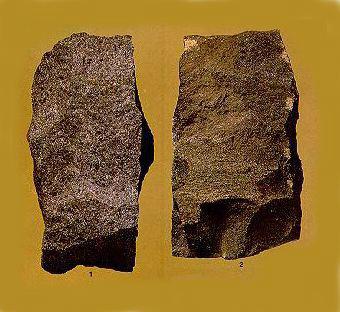
Igneous Rock - Basalt
|
|
|
|
|
|
|
|
|
|
|
|
 Igneous Rock - Basalt |
Igneous Rocks - BasaltColour: When fresh it is black or greyish black; often weathers to a reddish or greenish crust.Grain size: Fine. Texture: Usually dense with no minerals identifiable in hand specimen; a freshly broken surface is dull in appearance. May be porphyrithic. Structure: Often vesicular and/or amygdaloidal. Xenoliths are relatively common and usually consists of olivine and pyroxene; they have a green colour. Columnar jointing is common and often spectacular. Mineralogy: Phenocrysts are usually olivine (green, glassy), pyroxene (black, shiny) or plagioclase (white-grey, tabular). If olivine is present the rock is called olivine basalt. Microscopic examination show the groundmass to consist of plagioclase (usually labradorite), pyroxene, olivine and magnetite, with a wide range of accessory minerals. Amygdales may be filled, or partly filled with zeolites, carbonates or silica, usually in the form of chalcedony or agate. Field relations: Lava flows and narrow dykes and sills. The edges of dykes or sills are often finer grained than the centers or even glassy, due to rapid cooling on intrusion. Most basalts occur as lava flows either in volcanoes or as extensive sheets building up a lava plateau, which may cover hundreds of thousands of square kilometres, and may be fed by numerous fissures. The surface forms of lavas are of two principal types; smooth or ropy (the surface looks like a rope) which is known by the Hawaiian term of pahoehoe, and scoriaceous which is rough and clinkery and has the Hawaiian name aa. Another common form is pillow lava which consists of pillows or balloon-like masses of basalt - usually with a very fine-grained or glassy outer layer. They are formed by the eruption of lava into water." (Hamilton et al 1976, 170) |
|
Common
Igneous Rocks:
|
|
|
|
|
|
|
|
|
|
|
|
|
Rock types:
|
|
|
|
|
|
|
|